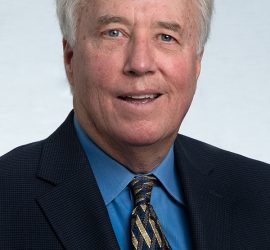About Reverse Mortgages
As you reach retirement age of 62 years old, an excellent way to increase cash flow is through a reverse mortgage. This is becoming very popular for senior citizens. How about no more P+I mortgage payments for life. Offering you the possibility of a Line of Credit that increases over the years without requiring you to ever pay back the loan.
Turn your illiquid home equity into liquid tax-free cash (*not tax advice, consult a tax professional). You are required to pay property taxes, property insurance, HOA dues and maintain the property. This loan is only for primary residences.
This more easily allows one to keep the life style they are accustomed to after retirement. I have attached some more highlights of this program. I have the two largest lenders that fund my clients’ loans, AAG (Tom Selleck commercials) and Finance America Reverse. The Federal Housing Administration insures your loan for these banks. I have 25+ years of mortgage lending experience.
Benefits & Components of a Reverse Mortgage
- This is a Non-Recourse Mortgage Note-holder is not responsible for any losses upon sale of home nor can their credit or heirs credit be negatively impacted from losses upon sale of home.
- If home appreciates at 4% annually and Note is 6% (negative amortization), the equity will not deteriorate over the life of the loan. The average home in Denver appreciated 4.1% over the last 20 years.
- Home Owner can purchase and refinance to a reverse on their new or current house or refinance HECM to HECM if home has appreciated faster than negative amortizing balance. No prepayment penalties, if you choose to pay mortgage off in full or Line of Credit (LOC).
- No monthly mortgage payments (P+I) for remaining years of your life while occupying the home. Only responsibility is Taxes, Insurance, HOA, and maintaining repairs.
- Title continues in the name of the Home Owners. Bank holds only the Note/property as collateral. FHA insures loan for bank against any possible future losses upon sale of home.
- Any equity remaining upon future sale of home is transferred to owners or their heirs.
- Heirs have first right to purchase home based on balance owed Bank or 95% of the appraised value for 12 months, protecting any remaining equity. If home never sells at 95% of value within a year, court can require a liquidation. Heirs are not responsible for any losses and a foreclosure does not affect their credit unless the take on the obligation of homeownership.
- ARM products allow Owners to establish a slightly larger loan, than a Fixed rate, and establish a Line of Credit that can be accessed in the future by the Home Owner. This LOC has a compounding interest rate of approximately 5% (current ARM rate) annually which means the unused LOC will increase for Home Owner. Example is a $100,000 LOC would increase to $105,000 after 1 year, compound growth to $110,250 year 2 etc.
- As the outstanding loan balance increases over the years on the reverse mortgage (negative amortization), there is no taxable event to owner. (Interest costs are added to loan balance=negative amortization.) Most IRA’s, pensions and retirement accounts are taxable upon liquidation, a reverse mortgage is a tax-free source of cash. Contact your CPA for a clear explanation.
- Retirees normally use savings, IRA’s, pension funds, 401k, etc. for living expenses. The reverse is just another liquid asset employed. Decreasing the need to liquidate these traditional savings, stocks, bonds, etc.
- Reverse-LOC’s are a strategic means of using another liquid asset during times when stocks portfolios have dropped precipitously in value. Investors can avoid liquidating stocks during recessionary periods at deep discounts and instead tap LOC’s for cash, waiting for stocks to recover.
Differing fees of Reverse Mortgage compared to a typical Forward Mortgage. Closing fees are comparable except:
- Interest rates on a reverse mortgage are slightly higher than a normal FNMA/FHLMC forward mortgage rate.
- The FHA charge for monthly mortgage insurance adds 0.5% to rate.
- One-time Upfront mortgage insurance (UPFMI) premium is 2% of appraised value or maximum UPFMI $13,593.
*If refinancing HECM to HECM (reverse to reverse), a credit from original UPFMI is applied against new HECM loan UPFMI fee. This FHA mortgage insurance is used to insure banks from possible losses in the future.
This material is not from HUD or FHA and has not been approved by HUD or a government agency.

